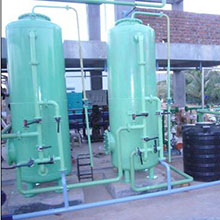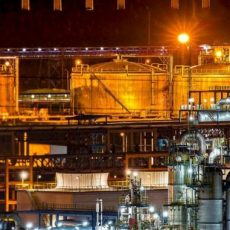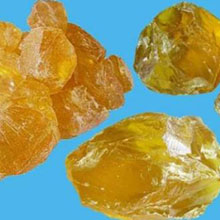Rotary Vane Pump in Degassing of Epoxy Resin of Application
Epoxy resin is a high molecular polymer with the molecular formula (C11H12O3)n, which refers to a general term for a class of polymers containing more than two epoxy groups in the molecule. It is a polycondensation product of epichlorohydrin and bisphenol A or polyol. Due to the chemical activity of epoxy group, a variety of compounds containing active hydrogen can be used to open the ring, cure and crosslink to form a network structure, so it is a thermosetting resin.
The main chemical component of epoxy resin is phenolic resin. Phenolic resin is a resin made by condensation polymerization of phenol and formaldehyde under catalyst conditions, after neutralization, and washing with water. Among them, phenol and formaldehyde resin are the most important. It is also the first synthetic polymer material in the world that is still very important today.

Epoxy resin glue generally refers to the adhesive made with epoxy resin as the main body, and epoxy resin glue should generally include epoxy resin curing agent, otherwise the glue will not be cured. During the mixing and stirring, air will be introduced and dissolved in the resin, just as carbon dioxide dissolves in water and forms bubbles in carbonated beverages. Bubbles are often formed in epoxy resin glue.
There are bubbles after curing to be analyzed from two aspects: one is the bubbles introduced during the glue adjustment or filling process, and the other is the bubbles generated during the curing process. If the glue has a high viscosity, the bubbles are more difficult to eliminate. If the viscosity of the glue is small, if the glue cures slowly, the bubbles will slowly rise to the surface and disappear automatically. To eliminate bubbles in the glue filling process, vacuum, heating to reduce viscosity, adding diluents to reduce viscosity, or adding defoamers, etc., can be used to eliminate bubbles. There are several reasons for bubbles in the curing process: too fast curing speed, high exothermic temperature, large curing shrinkage rate of glue, excessive addition of solvents in the glue, and too much plasticizer are all likely to produce bubbles during the curing process.

If a vacuum method is used to degas the epoxy resin, which vacuum pump should be used? Two-stage rotary vane vacuum pumps are generally used in the industry. The pumps have stable vacuum and large pumping capacity. The main models commonly used in epoxy resin degassing are 2X-30A (30L/s) and 2X-70A (70L/s). Moreover, according to our company’s experience, the vacuum pump for this application has better effects after proper adjustments, such as increasing the gap and so on. Due to the operating conditions, the pump is recommended to purchase a standard maintenance kit at the same time, which mainly includes: exhaust valve disc/rotary vane/oil seal/O-ring, etc.
Edited by: Shanghai EVP Vacuum Technology Co., ltd
(The article comes from the Internet. If reprinting is not allowed, please contact our company to delete it.)




